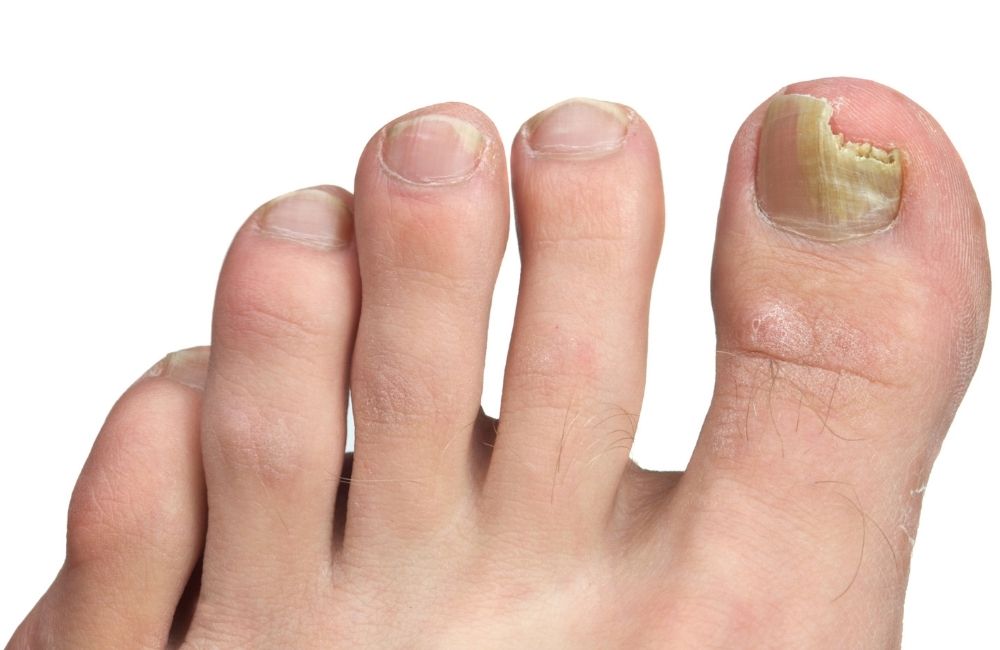Fungal nails are one of the most common foot problems that can happen to anyone. As they are extremely common, you have likely already heard of, seen, or experienced fungal nails. While lots of people get them, not everyone knows what they actually are. Let’s answer the question: what are fungal nails?

Fungal Nails (Onychomycosis)
Fungal nails are a type of infection involving the nail bed and plate. Medically, the condition is known as Onychomycosis (mycosis: fungal infection, Onycho: “of the nails”). This fungus is most commonly a dermatophyte (commonly ‘tricophotin rubin’). However, it can also involve yeasts like candida albicans.
These fungi find their way onto the skin and nails from the environment (Find out more about what causes fungal nail infections to happen).
The fungi have a food source from the keratin found in the nail and surrounding skin. When this occurs you will start to notice changes to the nail such as the colour and shape. They will often become thickened and brittle as the fungus eats away at the nail.

What nail changes can occur?
There are several different presentations of onychomycosis which include:
- Superficial White – This type of presentation will typically look like a white powder on top of your nails; pitting will start to occur in these areas.
- Distal-lateral Subungual Onychomycosis (DLSO) – This can present as a white/yellow/brownish discoloration with plaque debris underneath the corner of your nails.
- Distal Onychomycosis – Presents similarly however has some separation and debris under the centre at the tip of the nail.
- Proximal Subungual Onychomycosis (PSO) – Presents at the base of the nail near the cuticle and is often due to people pushing back their cuticles. It will be a yellow/white discolouration with destruction of the nail plate present.
- Total Dystrophic/Candidal Onychomycosis – Often the final stages of a fungal infection. The entire nail has become thickened, crumbly, discoloured and often separated from the nail bed.
Should I worry about my fungal nails?
Although fungal nails can be unsightly from a cosmetic point of view, they don’t often cause severe complications. However, in some cases the nails can break off and become ingrown toenails, which are at risk of infections such as cellulitis. Some people are at a higher risk of complications from fungal nails too. Therefore it is well worth seeing a podiatrist for your fungal nails to explore available treatment options.

